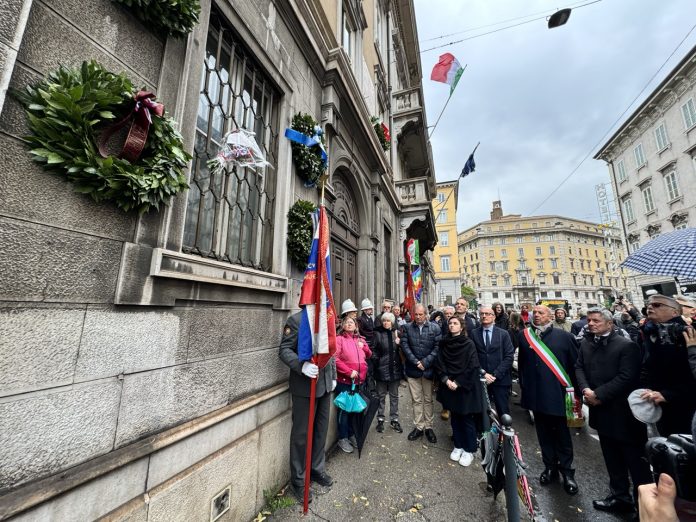by InTrieste
Eighty years have elapsed since the haunting echoes of tragedy reverberated through the streets of Trieste, marking a somber chapter in the city’s history. On April 23, 1944, the serene halls of Palazzo Rittmeyer, now home to the Giuseppe Tartini Conservatory, bore witness to a brutal act of reprisal by Nazi forces. As the world commemorates this poignant anniversary, the memory of those fateful events serves as both a testament to the past and a clarion call for a future defined by peace.
The Massacre of Via Ghega, as it came to be known, unfolded within the confines of Palazzo Rittmeyer, then requisitioned by German occupation authorities and transformed into the Soldatenheim, or “Soldiers’ Home.” Horrifying photographic evidence captured the aftermath: 51 civilian citizens, their lifeless bodies suspended from the internal staircase and even the windows of the facade, stark reminders of the brutality inflicted upon innocents.
In a poignant ceremony held on Tuesday morning at the Tartini Conservatory, dignitaries, citizens, and descendants of the victims gathered to honor the memory of those lost and to reaffirm a commitment to a future devoid of such atrocities. Trieste’s mayor, Roberto Dipiazza, led the proceedings, laying wreaths on behalf of the municipalities of Trieste and Postumia, underscoring the unity in remembrance that transcends borders and generations.
Speaking at the ceremony, Mayor Dipiazza emphasized the imperative of remembrance: “The memory of the tragic events of the past serves as the foundation upon which we must build a future of peace. We owe it to the victims, to ourselves, and to future generations to ensure that the horrors of history are never repeated.”
Echoing this sentiment, Igor Marentič, mayor of Postumia, reflected on the enduring legacy of the massacre: “We must not forget the tragic events that unfolded 80 years ago within these walls. It is incumbent upon us to remember, not only to honor the victims but also to heed the lessons of the past as a guiding light for the future.”
The commemorative ceremony, marked by solemnity and reflection, underscored the power of collective remembrance to transcend time and space. As Sandro Torlontano, director of the Conservatory, remarked, “Through art, culture, and music, we impart a powerful message of peace to future generations, ensuring that the echoes of history serve as a beacon of hope rather than a harbinger of despair.”
The ceremony culminated in a poignant performance at Palazzo Rittmeyer, where the haunting melodies of Boccherini’s “Adagio” intertwined with readings in Italian and Slovenian of unpublished texts by historian Roberto Spazzali. These poignant moments served as a poignant reminder of the human cost of conflict and the imperative of forging a future defined by compassion and understanding.
As the sun set over Trieste, casting a golden hue upon the city’s storied streets, the words of Daniela Dado, president of the Conservatory, resonated with newfound urgency: “Today, amidst the beauty of this city, we honor the memory of those who perished. Let us ensure that their legacy endures as a testament to the enduring power of the human spirit and a reminder of the fragility of peace.”
In the shadow of history’s darkest hour, Trieste stands as a beacon of hope, where the memory of the past serves as a guiding light for a future defined by peace and remembrance.





























